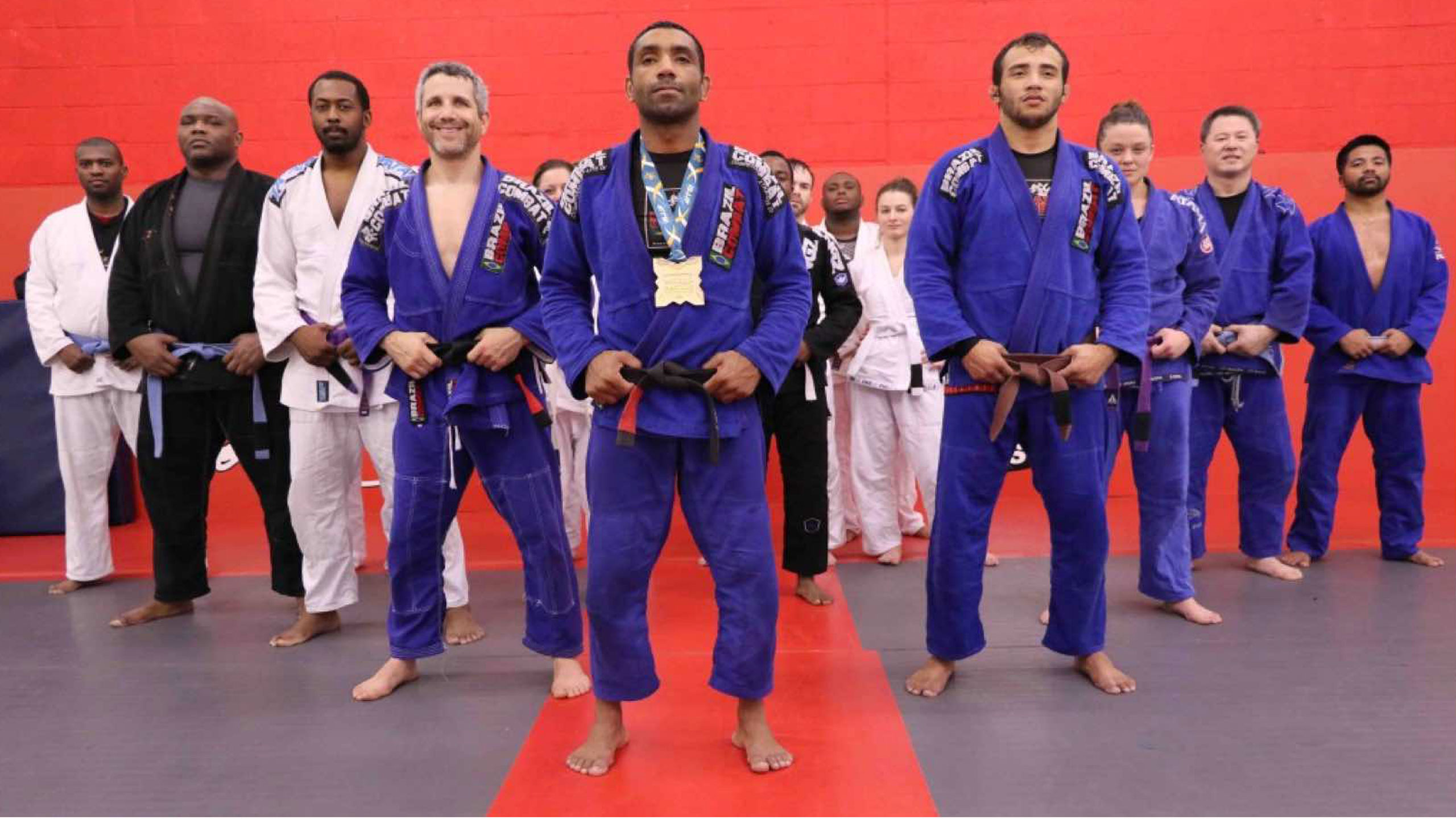Martial Arts Uniform
Baltimore Martial Arts has several different disciplines each having their own specific uniform and apparel requirements. Some disciplines like Kickboxing, Muay Thai & Mixed Martial Arts might just require you to have a T-shirt and shorts while Brazilian Jiu-Jitsu, Aikido and Judo require you to have a Gi.
Upon your first visit to our academy, assuming a uniform is required, we will either lend you one for the day or you can purchase one if you desire. Our staff will assist you with with purchasing and being sized for a uniform. Uniforms range in price from $20 (T-shirt) to approximately $85 for an adult sized white Gi. We have blue gis and can make special orders upon request.
Below is an article on the “Gi’ written by Stephen Kesting, an expert martial artist and practitioner of Brazilain Jiu-Jitsu.
Every sport has its uniform, and BJJ is no different.
Some schools call that outfit a “kimono,” but to me that conjures up images of geishas serving tea.
My preference is to call it what we always called it in Judo: a “gi.” Whatever the name you might was well get a decent one, because it will save you money and aggravation in the long run.
Some people wear a Karate gi to their first BJJ class. That might be OK for your first time, but I’ll bet you won’t be wearing this same outfit when you show up for your second class.
The narrow collar of a Karate or Taekwondo gi makes it much easier for your opponent to choke you. It’s a bit like grappling with a piano-wire garrote around your neck (i.e. it hurts)! The lightweight construction of a Karate-style gi also means that they quickly get ripped to shreds with all the grabbing and gripfighting in BJJ.
A gi designed for BJJ is usually made of heavy woven cotton, with durable stitching to withstand all the stresses of training.
You will encounter both “single weave” and “double weave” construction. A single weave gi is lighter, cooler, but less durable. Double weave gis are thicker, hotter, and more durable. It is also harder for an opponent to get a good grip on the thicker material of a double weave gi, which is why most people compete in double weaves.
Various manufacturers also offer intermediate-thickness weaves, somewhere between a single and a double. Others build gis from cotton-synthetic blends. And of course everybody claims that they have the best combination of weight, durability and comfort.
One option is to get a cheap single weave Judo gi for maybe $50 to $70.
A Judo gi is a lot better than nothing, but there are still two problems. First of all, that lightweight Judo gi probably has a rather thin collar and that means that you’re going to get choked more often. Also Judo rules require a more loose and baggy fitting gi than does BJJ, and that means that you’re giving your opponent better handles to hold you with. If you’re strapped for cash, though, it may be your best option (for now).
A gi built specifically for BJJ will usually have narrower sleeves and a tighter fitting lapels than a gi made for Judo. Some manufacturers go too far though, and produce skookum gis that feel great on your body but are too tight to be allowed in BJJ competitions. If you are thinking about competing then make sure that whatever gi you choose is competition-legal.
A quick note about washing and drying your gi. Unless they’re pre-shrunk, most gis will shrink a few inches in the arms and legs if you wash them hot or dry them in a hot dryer. I can’t be bothered to dry my gi separately, so I just buy a gi that is a few inches too long in the arm and pant sleeves initially. As I repeatedly wash it (hot) and dry it, it shrinks a bit and usually ends up fitting me great.
Eventually you’ll want to get two outfits, so that you can wear one while the other is drying.
Years ago you could get a BJJ gi in any color so long as it was white. Times have changed, and you now see blue, black, red, green, and even pink (for women) gis on the market. Some competitions won’t allow anything other than white, blue or black, so consider that before buying that camouflage gi, especially if it’s the only one you can afford!
Some people prefer plain white gis without any decoration.
Some schools do require you to attach the school patch, especially if you’re competing.
Other BJJ practitioners take the patch thing to a whole other level, decking their gi out with so many patches that they look like Formula One race cars. It’s all just part of the self expression possible in BJJ.
Finally I want to say that even if your focus is MMA or submission grappling you might STILL want to get a gi. Personally I think that it’s important to do at least a little bit of gi training, because you will be wearing clothes in 95% of all self defense situations. If you’re walking down the street wearing only spandex fight shorts then most muggers will probably avoid attacking you…
Stephen Kesting – Author

